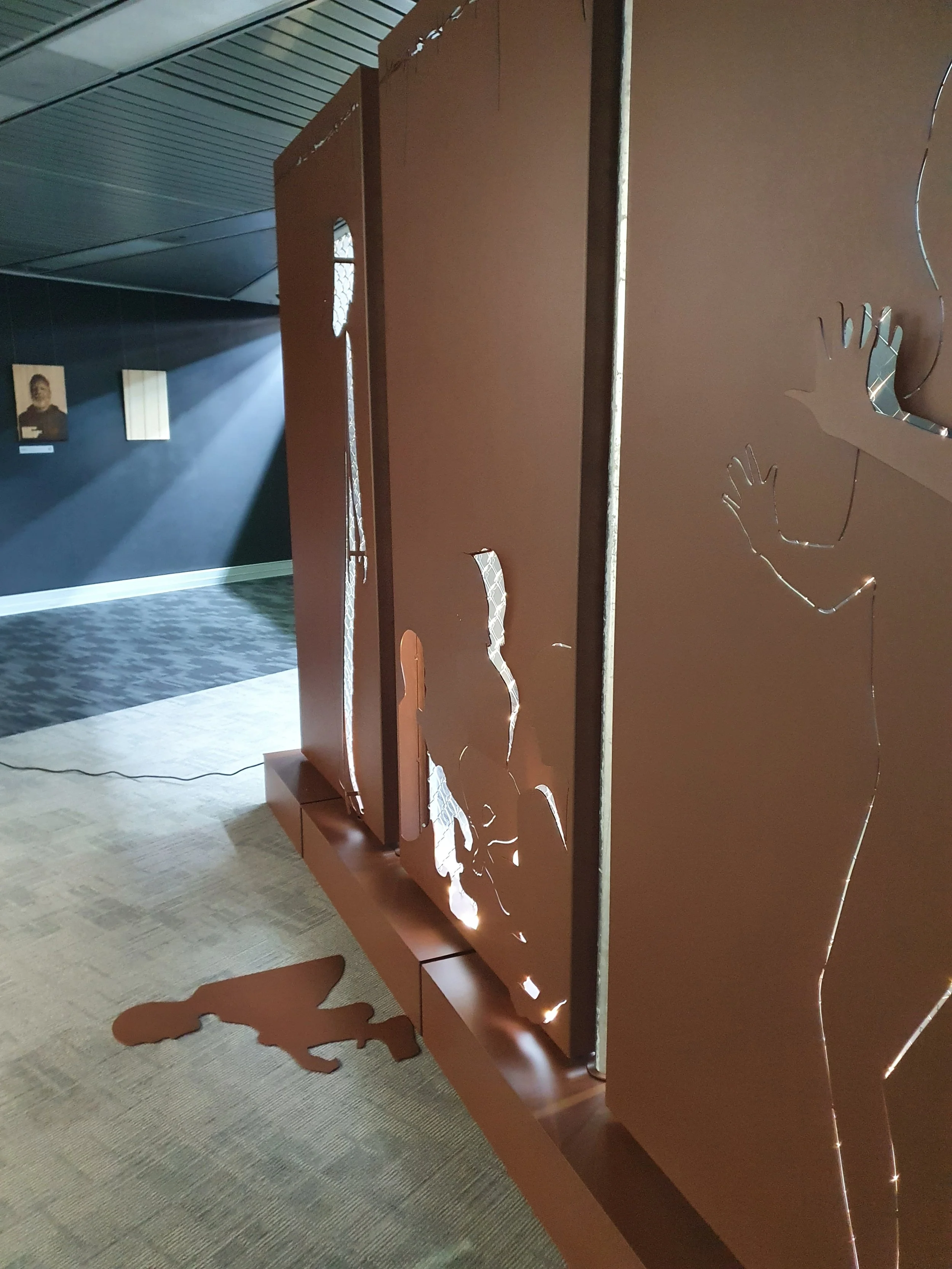Making Limen; Forlano Design consults to Missions Connect to build the Limen exhibition
Earlier this year, Forlano Design was commissioned to take a design from the curatorial team at Missions Connect and resolve it to ensure it was built in a way to suit their budget, time constraints, and structural requirements. The works were for ‘Limen’, an exhibition telling the stories of three Stolen Generation Survivors; Edith DeGiambattista, Tonji Hansen, and Tim Flowers.
Telling important historical stories deeply connected to place
The team at Missions Connect led by Reena Tiwari at Curtin University has been working with mission survivors for some time, including recording both the physical and experiential qualities of various mission spaces. These missions were sites of institutionalization, where children were forcibly removed from their families, and held there against their will. This exhibition curated by the team was one step in getting information to the public about what was experienced while housed at the missions.
The exhibition is one that starts with the stories of three survivors, Edith DeGiambattista, Tonji Hansen and Tim Flowers. The hope is that as more Survivors come forward with their stories and want to share it, the exhibition can also grow. It will not only form part of a documentation of their experience through text and video but also be materially evocative of their experience.
“The exhibition aims to encourage empathy, provides an alternative view of the Stolen Generations experience, and holds a hope that Indigenous and non-Indigenous people of Australia will hold hands and cross over the fence.”
Reflecting place and experience through design
The curators; Reena Tiwari, Chamil Subhasinghe and John Stephens, wanted to evoke the physical materiality of the site and specifically the Rabbit-Proof Fence, to echo the sense of separation, isolation, and mistreatment. The design called for using Corten (which has a self-protecting rust layer), galvanised steel, barbed wire, and chainlink. Penelope Forlano was brought on to consider the
time logistics, budget, safety, and transportation reasons to detail a solution that could meet all these needs whilst keeping the original intention clear.
A particular challenge was to ensure the stability of a linear screen that could not be bolted to the floor and could be added onto in the future, whilst also having a very narrow base to maintain the message of a fence.
“The project brief was challenging due to requiring a lightweight design for installation by two people and allowance for multiple dismounting, the addition of panels, and the subsequent reinstallation at various sites around the country. All sites would have differing levels of accessibility and conditions and it wasn’t as easy as just bolting it to the floor. So, in order to retain Mission Connect’s team design of a continuous linear, freestanding fence with a minimal base, Forlano Design devised a weighted and cassette modular system to ensure safety and structural needs were met.”
An additional challenge was the future allowance for installation at multiple locations, where site conditions could differ significantly. Considering WorkSafe requirements for handling, Corten for example proved too heavy and unsafe. Barbed wire would also be deemed dangerous in packing and installation and so some design changes needed to be made to meet the conceptual requirement.
Powder-coated aluminium was substituted for Corten, CNC routed details expressed the barbed wire, whilst the chainlink and galvanised posts were still incorporated. Penelope opted for a cassette system fabrication system to make assembly and disassembly easier, while still being able to be installed by only two people and in a modular format that allows for future extention.
The base required weighted elements to ensure the narrow base would still maintain stability for the 2400mm high panels. Scott and Associates provided structural engineering advice to ensure compliance.
Kingman was appointed to construct the works at a time of material shortages, and with a short time frame.
“With the added challenge of an unusual use of materials such as chain-link, Kingman rose to the challenge to create this bespoke system at a time of challenging material and product availability.”
Combined with the video and audio works, quotes from the Survivors, and other materials, the exhibition sensitively tells the stories of the experience of these three brave Survivors. Thanks to all who participated in the project, but most importantly to those who agreed to share their experiences.
“Limen: At the fence” is showing at the State Library of Western Australia until February 28th. Links to the exhibition can be seen here and the launch event here.




